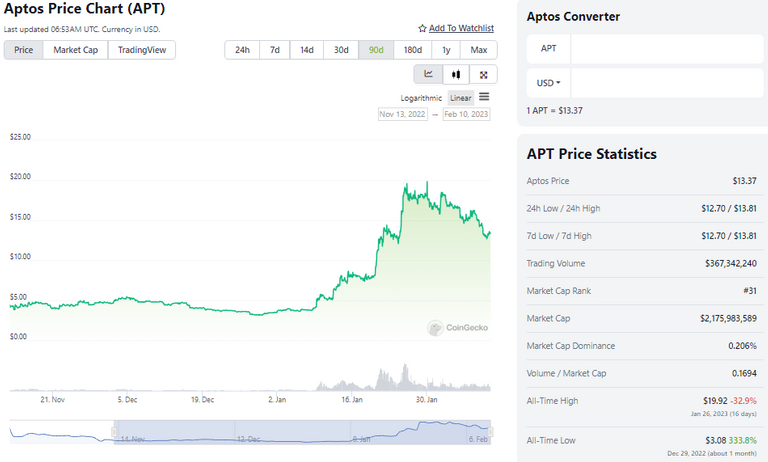Polygon is $1 again
I am looking at the coingecko market thismorning with breakfast and coffee.
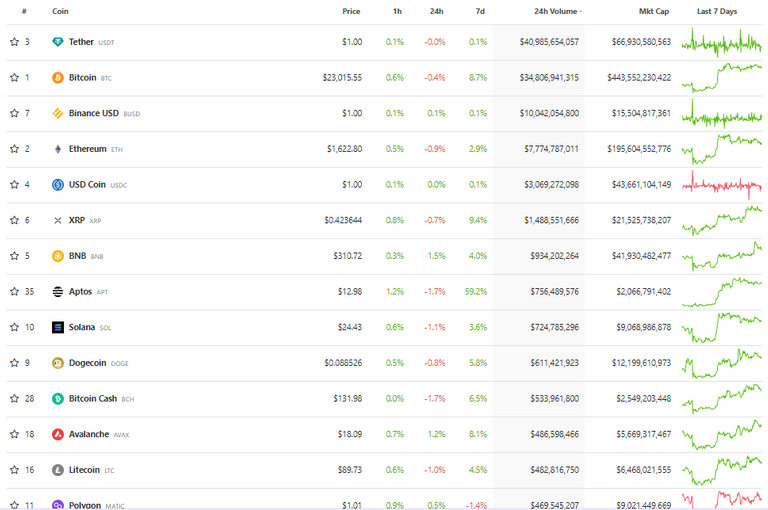
Aptos has a significant amount of volume today,
$756,489,576 in fact which is no small change. What is it?
https://www.coingecko.com/en/coins/aptos
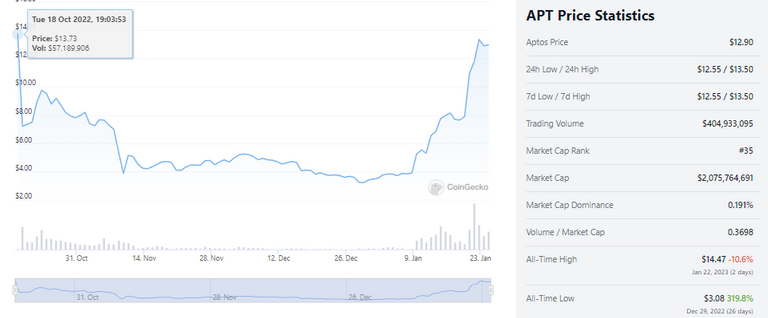
"Committed to developing products and applications on the Aptos blockchain that redefine the web3 user experience."
-- Documentation
https://aptos.dev/
- Domains (Secure your .apt domain for your journey through the Aptos ecosystem.)
https://www.aptosnames.com/ - Explorer (TOTAL TRANSACTIONS: 75,467,797)
https://explorer.aptoslabs.com/
Total Supply 1,016,457,999 | Actively Staked 840,014,272
Tx Per Sec 6 REAL-TIME | 1,569 LAST 30 DAYS
Active Validators 103
-- Whitepaper https://aptos.dev/assets/files/Aptos-Whitepaper-47099b4b907b432f81fc0effd34f3b6a.pdf
Let's look at the references at the bottom of the whitepaper.
[1] “Aptos-core,” 2022. [Online]. Available: https://github.com/aptos-labs/aptos-core
[2] “Move,” 2022. [Online]. Available: https://github.com/move-language/move
[3] D. Matsuoka, C. Dixon, E. Lazzarin, and R. Hackett. (2022) Introducing the 2022 state of crypto report.
[Online]. Available: https://a16z.com/tag/state-of-crypto-2022/
[4] Z. Amsden, R. Arora, S. Bano, M. Baudet, S. Blackshear, A. Bothra, G. Cabrera, C. Catalini, K. Chalkias,
E. Cheng, A. Ching, A. Chursin, G. Danezis, G. D. Giacomo, D. L. Dill, H. Ding, N. Doudchenko,
V. Gao, Z. Gao, F. Garillot, M. Gorven, P. Hayes, J. M. Hou, Y. Hu, K. Hurley, K. Lewi, C. Li, Z. Li,
D. Malkhi, S. Margulis, B. Maurer, P. Mohassel, L. de Naurois, V. Nikolaenko, T. Nowacki, O. Orlov,
D. Perelman, A. Pott, B. Proctor, S. Qadeer, Rain, D. Russi, B. Schwab, S. Sezer, A. Sonnino, H. Venter,
L. Wei, N. Wernerfelt, B. Williams, Q. Wu, X. Yan, T. Zakian, and R. Zhou, “The libra blockchain,”
- [Online]. Available: https://developers.diem.com/papers/the-diem-blockchain/2020-05-26.pdf
[5] S. Blackshear, E. Cheng, D. L. Dill, V. Gao, B. Maurer, T. Nowacki, A. Pott, S. Qadeer, D. R.
Rain, S. Sezer, T. Zakian, and R. Zhou, “Move: A language with programmable resources,” 2019.
[Online]. Available: https://developers.diem.com/papers/diem-move-a-language-with-programmableresources/2019-06-18.pdf
[6] D. Dill, W. Grieskamp, J. Park, S. Qadeer, M. Xu, and E. Zhong, “Fast and reliable formal verification of smart contracts with the move prover,” in Tools and Algorithms for the Construction and Analysis of Systems, D. Fisman and G. Rosu, Eds. Cham: Springer International Publishing, 2022, pp. 183–200.
[7] N. Popper. (2021) Lost passwords lock millionaires out of their bitcoin fortunes. [Online]. Available:
https://www.nytimes.com/2021/01/12/technology/bitcoin-passwords-wallets-fortunes.html
[8] The Diem Team, “State synchronization and verification of committed information in a system with reconfigurations,” 2020. [Online]. Available: https://github.com/aptos-labs/aptoscore/blob/main/documentation/tech-papers/lbft-verification/lbft-verification.pdf
[9] G. Danezis, L. Kokoris-Kogias, A. Sonnino, and A. Spiegelman, “Narwhal and tusk: A dag-based mempool and efficient bft consensus,” in Proceedings of the Seventeenth European Conference on Computer Systems, ser. EuroSys ’22. New York, NY, USA: Association for Computing Machinery, 2022,
p. 34–50. [Online]. Available: https://doi.org/10.1145/3492321.3519594
[10] The Diem Team, “Diembft v4: State machine replication in the diem blockchain,” 2021. [Online].
Available: https://developers.diem.com/papers/diem-consensus-state-machine-replication-in-the-diemblockchain/2021-08-17.pdf
[11] S. Cohen, R. Gelashvili, L. Kokoris-Kogias, Z. Li, D. Malkhi, A. Sonnino, and A. Spiegelman, “Be aware of your leaders,” CoRR, vol. abs/2110.00960, 2021. [Online]. Available: https://arxiv.org/abs/2110.00960
[12] A. Spiegelman, N. Giridharan, A. Sonnino, and L. Kokoris-Kogias, “Bullshark: Dag bft protocols made practical,” in Proceedings of the 20th Conference on Computer and Communications Security (CCS), ser.
CCS ’22. Los Angeles, CA, USA: Association for Computing Machinery, 2022.
[13] R. Gelashvili, A. Spiegelman, Z. Xiang, G. Danezis, Z. Li, Y. Xia, R. Zhou, and D. Malkhi, “Block-stm: Scaling blockchain execution by turning ordering curse to a performance blessing,” 2022. [Online].
Available: https://arxiv.org/abs/2203.06871
[14] J. Lind, “The evolution of state sync: The path to 100k+ transactions per second with sub-second latency at aptos,” 2022. [Online]. Available: https://medium.com/aptoslabs/52e25a2c6f10
Did you catch where it said Libra blockchain there? What is this and why is it $12 ?
https://developers.diem.com/papers/the-diem-blockchain/2020-05-26.pdf
^ The diem blockchain paper refrenced by [4] <--- Where do we see this?
In the Aptos white paper under Aptos Vision;
====================
"The Aptos vision is to deliver a blockchain that can bring mainstream adoption to web3 and empower an ecosystem of decentralized applications to solve real-world user problems. Our mission is to advance the state-of-the-art in blockchain reliability, safety, and performance by providing a flexible and modular blockchain architecture. This architecture should support frequent upgrades, fast adoption of the latest technology advancements, and first-class support for new and emerging use cases. We envision a decentralized, secure, and scalable network governed and operated by the community that uses it. When infrastructure demands grow across the world, the computational resources of the blockchain scale up horizontally and vertically to meet those needs.
As new use cases and technological advances arise, the network should frequently and seamlessly upgrade without interrupting users. Infrastructure concerns should fade into the background. Developers and users will have access to many different options for key recovery, data modeling, smart contract standards, resource usage tradeoffs, privacy, and composability. Users know that their assets are secure, always available, and can be accessed with near at-cost fees. Anyone can safely, easily, and immutably transact with untrusted parties worldwide. Blockchains are as ubiquitous as cloud infrastructure. To achieve this vision, significant technological advances must be made. Our experiences building, developing, advancing, and deploying the Diem blockchain (the predecessor of the Aptos blockchain) over the past three years have proven that a network can continually upgrade its protocols without disrupting its clients [4].
The Diem mainnet was deployed to more than a dozen node operators with multiple wallet providers in early 2020. Over the following year, our team issued two major upgrades that changed the consensus protocol and the core framework. Both upgrades completed without downtime for users. With the Aptos blockchain, we have made a series of radical improvements to the technology stack while also incorporating safe, transparent, and frequent upgrades as a core feature, as inspired by the Diem blockchain. In particular, we highlight novel methods of transaction processing (as described in Section 7) and new approaches to decentralization and network governance."
https://aptos.dev/assets/files/Aptos-Whitepaper-47099b4b907b432f81fc0effd34f3b6a.pdf
===================
So what is Aptos?
"Welcome! Aptos is a Layer 1 for everyone. In the Ohlone language, "Aptos" means "The People." This site is here to help you grow a web3 ecosystem project that benefits the entire world through easier development, more reliable services, faster transactions, and a supportive, decentralized family."
It trades high on Upbit against KRW

https://upbit.com/exchange?code=CRIX.UPBIT.KRW-APT
Back to the Diem 2020 paper;
"A key prerequisite for healthy competition and innovation in financial services is the ability to rely on common infrastructure for processing transactions, maintaining accounts, and ensuring interoperability across services and organizations. By lowering barriers to entry and switching costs, the Libra protocol will enable startups and incumbents to compete on a level playing field, and experiment with new types of business models and financial applications.
Blockchain technology lends itself well to address these issues because it can be used to ensure that no single entity has control over the ecosystem or can unilaterally shape its evolution to its advantage [1]. The Libra Blockchain will be decentralized, consisting of a collection of validators that work together to process transactions and maintain the state of the blockchain.
These validators also form the membership of the Libra Association, which will provide a framework for the governance of the network and the reserve that backs the coin. Initially, the association (and validators) will consist of a geographically distributed and diverse set of Founding Members. These members are organizations chosen according to objective participation criteria, including that they have a stake in bootstrapping the Libra ecosystem and investing resources toward its success.
Over time, membership eligibility will shift to become completely open and based only on the member’s holdings of Libra. The association has published reports outlining its vision [2], its proposed structure [3], the coin’s economics [4], and the roadmap for the shift toward a permissionless system [5]."
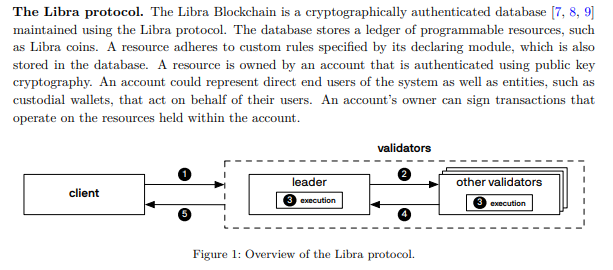
https://developers.diem.com/papers/the-diem-blockchain/2020-05-26.pdf
"Account addresses. An account address is a 256-bit value. To create a new account, a user first generates a fresh verification/signature key-pair (vk, sk) for a signature scheme and uses the cryptographic hash of the public verification key vk as an account address a = H(vk). 1 The new account is created in the ledger state when a transaction sent from an existing account invokes the create_account(a) Move instruction. This typically happens when a transaction attempts to send Libra to an account at address a that has not yet been created.
Once the new account is created at a, the user can sign transactions to be sent from that account using the private signing key sk. The user can also rotate the key used to sign transactions from the account without changing its address, e.g., to proactively change the key or to respond to a possible compromise of the key.
The Libra protocol does not link accounts to a real-world identity. A user is free to create multiple accounts by generating multiple key-pairs. Accounts controlled by the same user have no inherent link to each other. This scheme follows the example of Bitcoin and Ethereum in that it provides pseudonymity [19] for users."
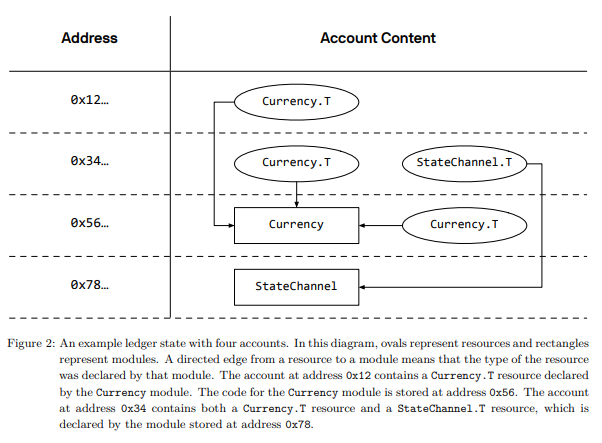
There is a lot in here that is interesting, in both of these papers. Read long with me!
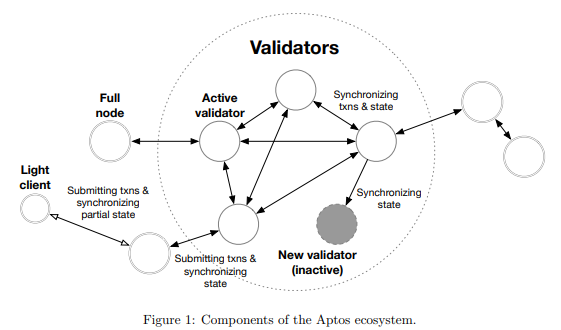
"As the Aptos blockchain continues to improve and grow, we will issue refreshed versions of this white paper with the latest iteration of our protocols and design choices. In the rest of this document, we describe the current state of the Aptos blockchain as well as future plans."
https://aptos.dev/assets/files/Aptos-Whitepaper-47099b4b907b432f81fc0effd34f3b6a.pdf
The largest volume today was on upbit, does anyone here own some of this?
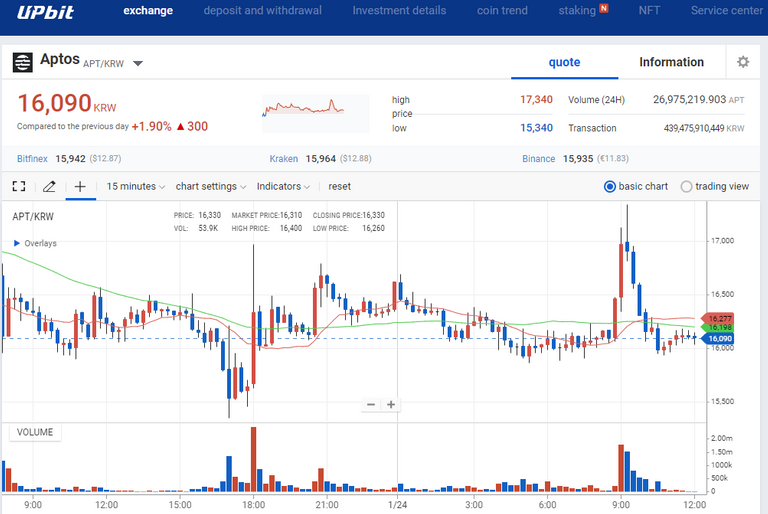
https://upbit.com/exchange?code=CRIX.UPBIT.KRW-APT
Moving along, not much else is too exciting today in crypto.
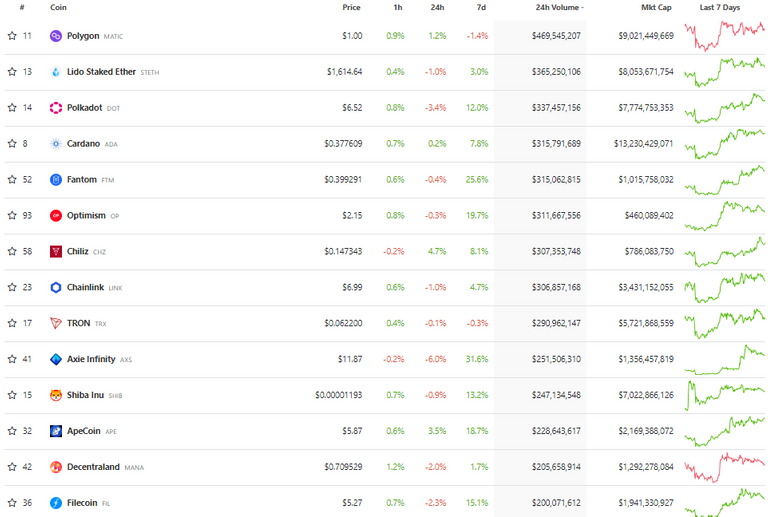
Whats up with Filecoin? Seems like a good concept, is this just bear market action?
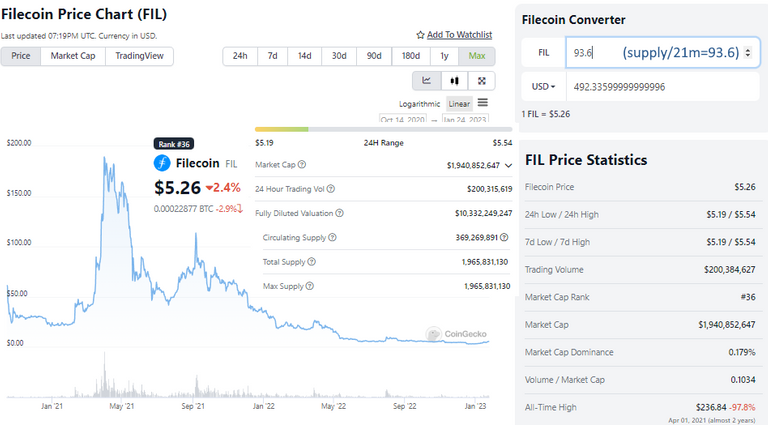
$5 is ridiculously cheap when you consider it was nearly $200 at one point. I wonder what conditions there were that put it over $100, and what are the are fundamentals of this coin?
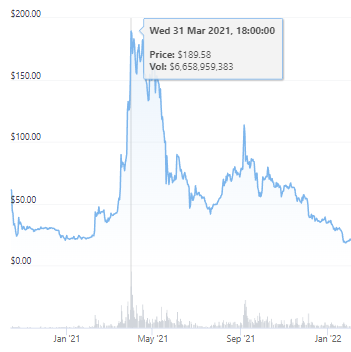
Also consider it is up over the past 30 days, 15 days and 7 days.
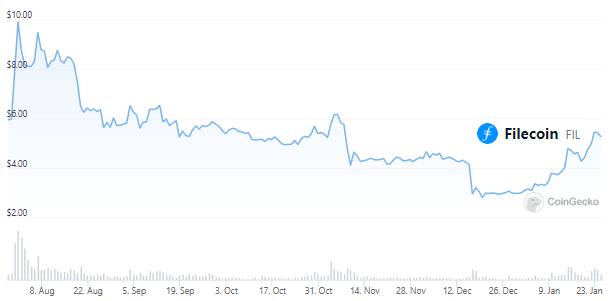
https://www.coingecko.com/en/coins/filecoin
Thanks for reading along with me, what do you think about the coins I mentioned here?
Anyways I have to go to work. Send me a Tip if you like!
Send  SWAP.BTC !
SWAP.BTC !  (Sign Up) Follow & Trail
(Sign Up) Follow & Trail

 Donate
Donate  Donate
Donate 